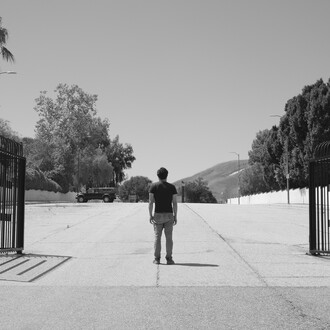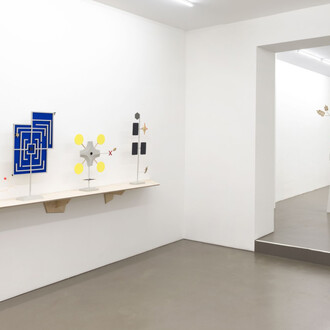The exhibition at Mehdi Chouakri Wilhelm Hallen presents Series E (1967/68), one of Charlotte Posenenske’s last and most important groups of works. These minimalist revolving-wing objects, made of aluminum and particleboard, expand the traditional understanding of sculpture. With Series E, Posenenske brought together her artistic concerns: variability, participation, and the transgression of established boundaries of art. At the same time, Series E marks the endpoint of her artistic career, as Posenenske withdrew from the art world in 1968.
The revolving-wing objects of Series E are not autonomous sculptures in the traditional sense but open systems that constantly change through the audience’s interaction. Whether composed of door-sized aluminum panels, a compact cubic structure, or a walk-in particleboard cube, each work combines architectural reference with sculptural form. Their movable wings and doors can be opened or closed in countless variations, creating shifting passages, gaps, and enclosures. In this way, the works do not present fixed shapes but unfold as ever-changing environments, inviting the public to transform their appearance and redefine the surrounding space.
The creation of Series E coincided with the political climate of the late 1960s, when ideas of changeability and participation were central to student and protest movements. Posenenske’s revolving wings reflect this spirit by dissolving hierarchies between artist and audience and conceiving art as an open, collective field of action. In art-historical terms, Series E resonates with 1960s Minimal Art. Yet, while artists such as Donald Judd or Carl Andre explored the relationship between object, space, and viewer primarily on a conceptual level, Posenenske advanced the notion of participation further: her works require physical engagement, invite transformation, and deliberately resist a final, fixed form.
















